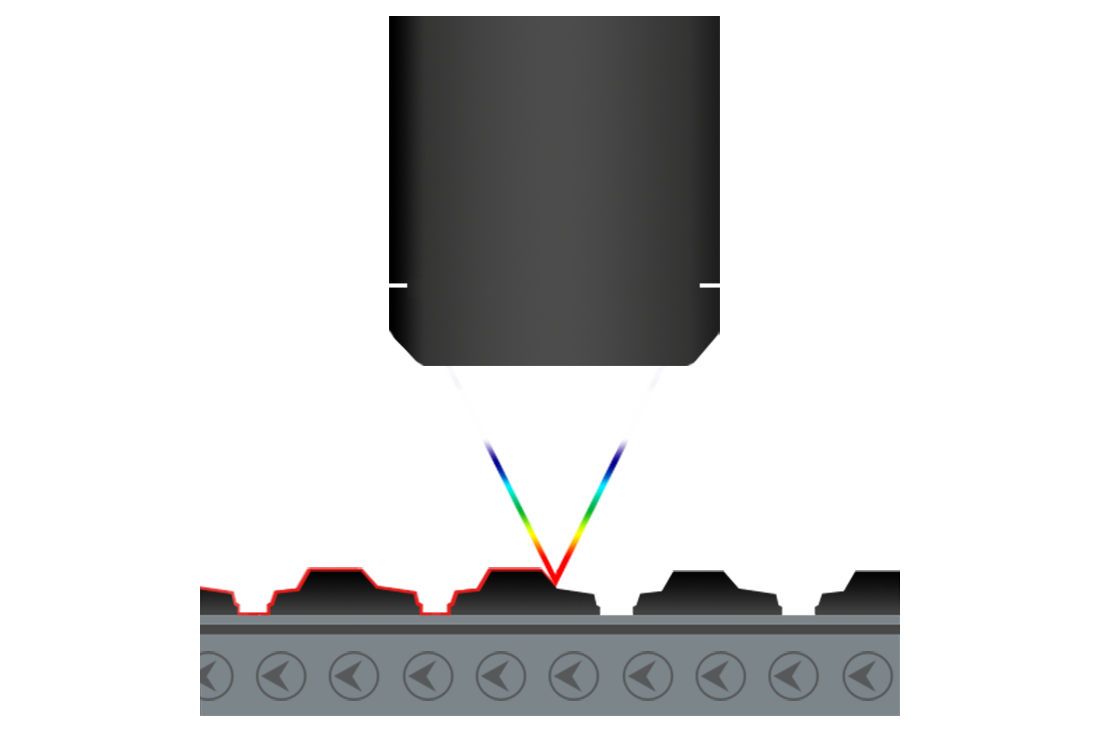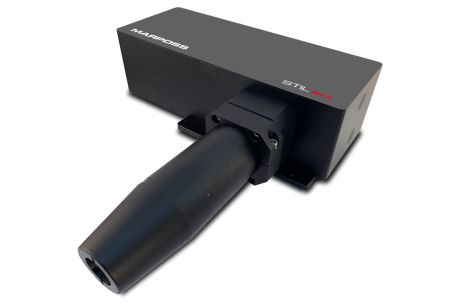Non-contact defects inspection
Vision systems have a dual role: to provide a good quality image of the sample surface at the desired magnification and to process the image in order to detect and analyze certain predefined features or textures.
Although processing units are becoming more and more powerful, the main limitation of current vision systems is their very small depth of field (a few tens of µm or less, depending on the magnification and numerical aperture).
Because of this limitation, expensive and complicated Z-scanning systems and/or an automatic focusing mechanism are required to visualize samples with larger Z-extension as well as moving ones.
Defect inspection solution from STIL / MC2 family of products offers a depth of focus a hundred times larger than actual vision solution that reduce pressure on focusing solution and translation/carrier flatness.

Chromatic confocal microscopy is a technology that enables the design of optical systems with a very large depth of field/focus (up to several mm).
For samples located anywhere in the extended depth of field/focus, these systems provide a sharp, high quality and perfectly focused image.
This technology combines the merits of color coding and traditional confocal microscopes.
Chromatic confocal microscopes consist of a slit illuminated by a polychromatic light source, a high quality chromatic objective, a beam splitter and a 4K line camera.
- Large Depth Of Field/Focus (DOF): Millimeters DOF instead of 10th of µm for microscopes
- Less/no focusing required
- Possible focus on glass & mirror
- Resolution (X-Y) pixel size on sample ≥ 0,43 µm*0.43µm
- High speed up to 199.5 klines per second
- Works on any material metal (polished or rough): glass, ceramics, plastics…
|
Model |
Unit |
NanoView (new) |
MicroView |
WireView |
DeepView (mk2) |
SuperView |
|
Part number |
|
OPSTM702001 |
OPSTM704001 |
OPSTM708001 |
OPST0706002 |
OPSTM709001 |
|
Line Length |
mm |
1,34 |
1,8 |
1,51 |
4,2 |
12,85 |
|
Depth of Field |
µm |
120 |
500 |
900 |
2600 |
2000 |
|
Working Distance |
mm |
7,4 |
10,1 |
7,8 |
19,5 |
11,3 |
|
Max. Frequency Acquisition |
|
199 500 |
199 500 |
199 500 |
199 500 |
199 500 |
|
Magnification |
|
17,3 |
12,9 |
15,6 |
5,6 |
1,8 |
|
Numerical Aperture |
|
0,75 |
0,5 |
0,75 |
0,37 |
0,33 |
|
Max. Sample Slope |
° |
43 |
30 |
46 |
20 |
17 |
|
Pixel Size on the Sample |
µm |
0,43 |
0,58 |
0,49 |
1,35 |
4,1 |
|
Optical Part : Length |
mm |
421,6 |
412,8 |
468 |
400,5 |
370 |
|
Optical Part : Diameter |
mm |
50 |
50 |
70 |
60 |
60 |
|
Optical Part : Weight |
g |
5300 |
5200 |
5800 |
5850 |
5600 |
